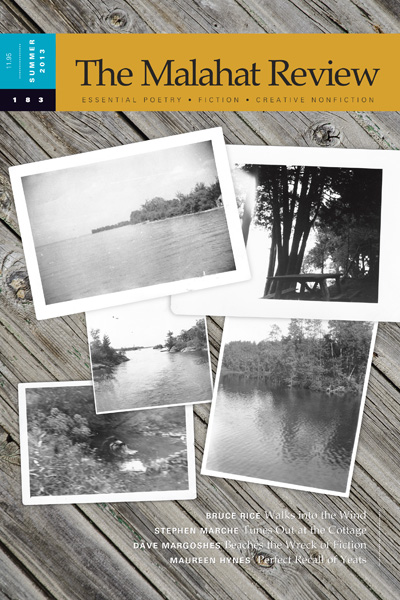Roomie Carrie Schmidt highlights some of her favourite offerings from other Canadian literary journals.
Room doesn’t have a central office, so when we meet for our regular board/catch-all meetings, there is a rabid free-for-all once the person who has collected the mail pulls out the magazines that recently arrived. One of the perks of working for a Canadian literary magazine is the subscription exchange: a polite way of playing doctor with colleagues/competitors; we show you ours, you show us yours. PRISM international has been publishing blog posts highlighting other magazines’ literary excellence, and I’m jumping on the bandwagon, especially after receiving this from a writer after I sent her an email of admiration:
“I sometimes think of literary journals as a vacuum that my work goes into and then no one ever reads it–I don’t know why–so it’s nice to hear people are actually encountering it.”
Here are some of my recent favourites [by recent I mean within a year or so. I am neither a particularly current nor linear reader and tend to pick at collections and anthologies rather than devour them cover-to-cover] from Canadian literary magazines:

• fantastic cover art by Kotori Kawashima
• creative non-fiction by Carolyn White, “Narrative Supplemental”; an annotated police report of the author’s sister’s suicide, capturing the emotional disconnect/fury and bleak humour endemic to suicides

• Jill McDonough’s “I Get an Eleven Dollar Haircut in Walpole, Massachusetts”: “I’d have pulled it down myself but I expect a shampoo girl/a little ceremony. She cuts an inch. The other ladies look“
• Food Bank” by Dorothy Field: “We take the old Chinese men to the back room,/let them point. Try to find something for the ones/with no stove or no can opener or no teeth.”
• Bruce Rice’s “Into the Wind”. The reader is forced to turn the magazine sideways to read it correctly, making for an awkward reading experience if one is loathe to break a magazine spine, but also seems completely integral to the poem: “I am here for the last time with my brother, thought neither of us knows it. He has shrunken/into an old man in an exile that is mostly his own.”

Mark Yakich’s “Love Poem for Ex-Wife” and “Love Poem for Ex-Husband” Interior art by the Toronto-based art collective Team Macho. Surreal, awkward and really funny, some examples featured in Riddle Fence were “We’re Gonna Need a Bigger Bone” and “Unfortunate Sweater Pairing”
Event 42.2, Fall 2013

• Julie Paul’s short fiction “Her Full Name Was Beatrice” pulled me in right away; it slowly unfolds into the worst type of real-life horror.
• Kayla Czaga’s creative non-fiction work, “Cat Face” demonstrates a different type of real-life horror, revealing the tragedy this is underemployment and life-malaise. Czaga has another work of non-fiction forthcoming in the next issue of Room, #37.2, Summer 2014, and a book of poetry coming out in the fall.
Prism International Winter 2014

At a meeting in February, I snagged PRISM’s most recent issue, the Love & Sex issue, Winter 2014. I don’t know what sort of magic they are working there over there, but they are attracting – and publishing – really good, solid writing. From Billeh Nickerson’s poems “My Montreal Vagina” and “Petrified” to Bev Craddock’s short story “Bodies in the Lake” to Andrew King’s “Love Poems Don’t Work”… and that’s only a tiny handful of the gems inside this issue.I only have one very small issue with this issue: I wasn’t clear on what came first: Ariella Jenkins’ poems translated into Spanish by Ezequiel Zaidenwerg, or were they Zaidenwerg’s poems translated into English by Jenkins?
The bios didn’t help me figure it out. I’m assuming the Spanish was translated into English just because of placement, but, well, you know that clichéd phrase about “assuming”… I also really like that PRISM doesn’t have an editor’s letter, where the translation probably would’ve been explained, but that just leaves more room for more stories and poems, so this isn’t a complaint, it’s kudos! I’m looking forward to seeing what the next batch of mail brings.














